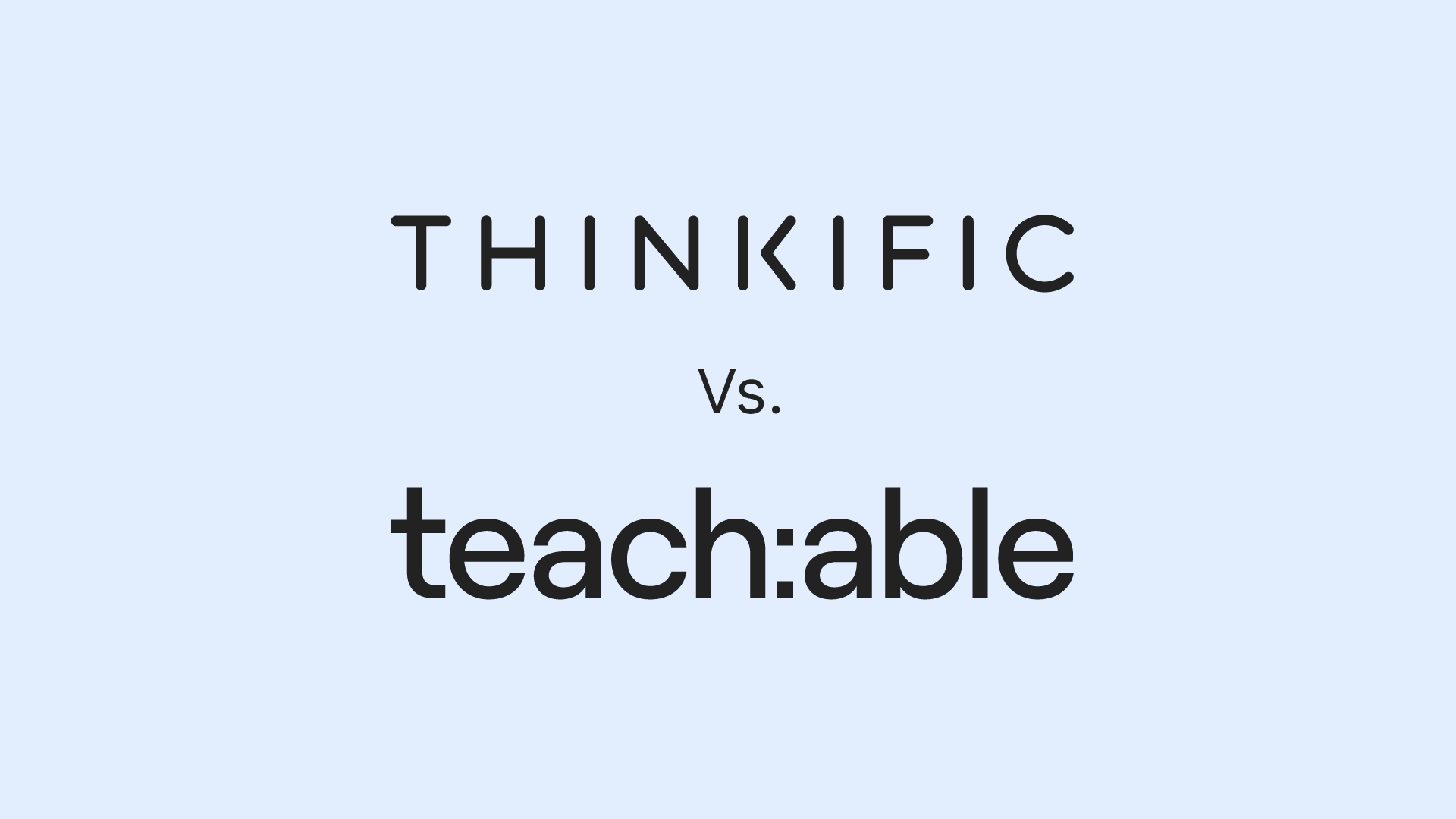|
Getting your Trinity Audio player ready...
|
Online learning platforms are becoming increasingly popular as a way for students to learn from home. This technology offers the convenience and flexibility of engaging with course material at your own pace, with access to varying levels of educational content such as live webinars and virtual lectures.
The global eLearning market exceeded $315 billion by 2022, in part due to the disruption of COVID19 and an increased demand for remotely delivered courses. Online learning platforms are a great way to learn various courses online while enjoying the comforts of working from home and benefiting from lower costs.
There are several types of online learning platforms available for learners, including industry-specific ones that focus on a certain domain like finance or marketing, as well as general-purpose platforms that offer courses in various subject areas.
When selecting an online learning platform, it is important to choose one that fits your individual needs in order to ensure you get the best experience possible.
In this article we look at what online platforms are, why they are important and how they are used in eLearning today!

What is an Online Learning Platform?
An online learning platform is a web-based space where educational content and resources are hosted to provide an environment for participating in educational activities. These platforms not only deliver lectures, articles and quizzes, but also allow instructors to interact directly with students providing feedback and tracking student progress.
Like any other online platform, one designed for learning consists of webspace and content abundant with educational materials. The course content is usually divided into different topics or subjects, which are uploaded to the digital platform by the course instructor or teacher, depending on the institution in question. An e-learning platform can be restricted by membership (only those who are registered can access it), but it may also be free to access for anyone wanting to learn.
The major benefits of an online course platform are that both students and teachers can track progress while organizing everything neatly in one place. Students may even have an option of interacting with each other on the platform if available features allow them to do so. The flexibility that an e-learning environment offers is impossible to replicate through traditional classroom learning.
The use of these platforms has become increasingly popular over the past few years due to their convenience and ease of use.
What are the Types of Online Learning Platforms?
Different types of online learning platforms can be categorized by their intended purpose or application such as:
- Learning Destination Sites,
- Administrative Platforms,
- Learning Management Systems (LMS) and
- Learning Management Ecosystems (LME).
Each type of platform provides different features, functions and capabilities depending on the user’s particular needs.
Learning Destination Sites offer students different interactive tools which enable them to explore various topics at their own leisure with minimal oversight from instructors.
Administrative Platforms are administrative software solutions commonly used in universities which support core academic activities like curriculum management, course registration and fee collection, etc.
LMS are powerful software packages that offer everything required to design an effective course for delivery across an entire organization.
Finally, LMEs are integrated suites comprised of various learning tools such as adaptive learning engines, learning content management features and a course authoring tool all within the same platform enabling users to efficiently access multiple related learning resources simultaneously.
How can you Use an Online Learning Platform
Learning online can be both an exciting and intimidating experience. To make sure you get the most out of your virtual classes, here’s some advice to follow when heading into any new platform:
First, register with the platform by providing your username or e-mail and a secure password. From there, check if you will need to attend live lectures or can access learning materials at your own pace.
After registering, contact the instructor if you have questions on how assignments should be submitted and what deadlines are associated with each one. Having open communications with your instructor is a great way to stay on top of expectations and course work.
Finally, remember that online learning can provide an engaging way to learn from home—take advantage of it by investing in a solid internet connection, audio/video support for lectures, and keeping an updated version of the software required for lectures.
Benefits of Online Learning Platforms
The emergence of online learning platforms have changed the way education is delivered and consumed. Over the past decade, most educational institutions have adopted some form of digital and online learning technology, freeing up their classrooms and providing unique experiences to today’s learners.
Online learning provides more flexibility with time and schedule. With the increasing number of portable devices, laptop computers and Wi-Fi connections, accessing educational materials has never been easier. Through these online learning platforms, students can now access resources regardless of geographic location or time zone.
Aside from convenience, online learning offers a wide range of benefits: students can be exposed to new ideas efficiently and effectively; they can set individual goals that are consistent with their desired achievements; and teachers can monitor students’ progress in real time for better instructional guidance.
Ultimately, this leads to an improved level of student performance thanks to the flexible learning environment offered by online curriculums.
1. An abundance of budget friendly Choices
The emergence of online learning platforms have changed the way education is delivered and consumed. Over the past decade, most educational institutions have adopted some form of digital and online learning technology, freeing up their classrooms and providing unique experiences to today’s learners.
Online learning provides more flexibility with time and schedule. With the increasing number of portable devices, laptop computers and Wi-Fi connections, accessing educational materials has never been easier. Through these online learning platforms, students can now access resources regardless of geographic location or time zone.
Aside from convenience, online learning offers a wide range of benefits: students can be exposed to new ideas efficiently and effectively; they can set individual goals that are consistent with their desired achievements; and teachers can monitor students’ progress in real time for better instructional guidance.
Ultimately, this leads to an improved level of student performance thanks to the flexible learning environment offered by online curriculums.
2. Flexible and Convenient
Online learning has been growing in popularity in recent years, with many universities around the world now offering courses that can be completed fully or partially online. The rise of this model is due, in large part, to its flexibility and convenience for the student.
For learners who need to continue working full-time or commute from their family home on a daily basis, online learning makes it possible to acquire education without sacrificing other responsibilities. It also means students can attend courses from out-of-state schools without ever having to travel there.
The also allows students to study at their own pace and helps reduce the financial burden of attending college by eliminating unnecessary transportation costs. Online learning provides options and opportunities for those who may not have access to traditional brick and mortar campuses or lack the time or money to study in person.
3. Wide variety for Every Learning Style
Online learning is growing in popularity as more versatile options become available to suit various learning styles, whether it be group-based online learning, one on-one courses, or video-based course approaches.
- Group-based online learning is ideal for those wishing to maintain some level of in-person interaction and convenience - the contemporary boardroom design environment for instance - while still taking advantage of the convenience of the digital world.
- One-on-one online courses are perfect for those who feel overwhelmed in group settings because they provide exact personalized solutions tailored specifically to each individuals needs.
- Video-based courses have also recently surged in terms of interest as they offer much needed flexibility for learners with unpredictable schedules; by providing prerecorded videos which can be accessed at any time and from anywhere in the world.
In Summary: Understand Learning Platforms
An online learning platform primarily combines digital media such as lectures, quizzes, interactions and online exams. .
Depending on the specific platform’s functionality capabilities they may be used to support traditional programs or even offer fully online courses.
Today's advanced versions of these platforms allow not just course creation but also include tools to streamline content production and delivery in an user-friendly environment.
These platforms can provide different types of services such as student registration, payment acceptance, testing integrity protection, certificate awarding, reporting and analytics and student/teacher relationship management.
See our list of the best online course builder platforms and the best learning management systems to see the difference in the types of online learning platforms.






